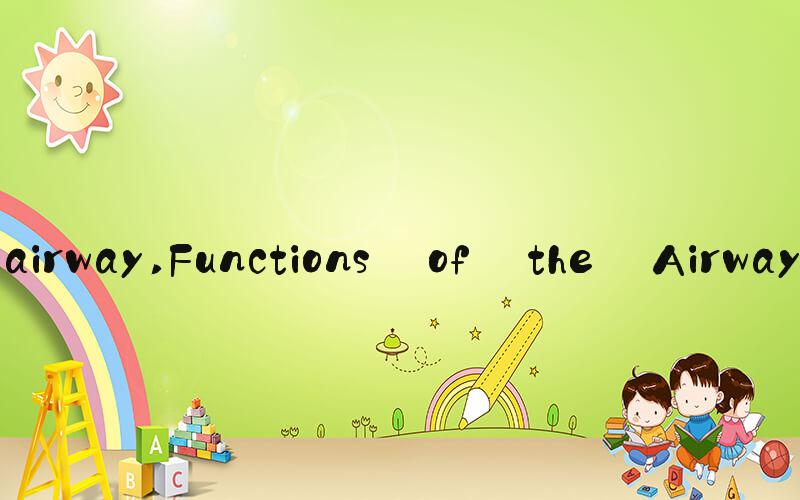
 Introduction
IntroductionThe airway, also known as the respiratory tract, is a complex system of organs and structures that are responsible for the exchange of gases between the body and the environment. The airway is divided into two sections: the upper airway and the lower airway. The upper airway includes the nose, mouth, pharynx, and larynx, while the lower airway includes the trachea, bronchi, bronchioles, and alveoli.
Functions of the AirwayThe primary function of the airway is to provide a pathway for air to enter and exit the body. This is essential for the exchange of gases between the body and the environment, namely the intake of oxygen and the removal of carbon dioxide. The airway also helps to warm, humidify, and filter the air before it enters the lungs. Finally, the airway serves as a protective barrier against foreign particles, such as dust, bacteria, and viruses.
Airway DisordersThere are numerous disorders that can affect the airway and compromise its function. Some of the most common disorders include asthma, chronic obstructive pulmonary disease (COPD), pneumonia, and lung cancer. Asthma is a chronic respiratory disorder characterized by bronchospasm and inflammation of the airways, which can lead to difficulty breathing and coughing. COPD, on the other hand, is a group of progressive lung diseases, including chronic bronchitis and emphysema, that cause airflow obstruction and breathing difficulties. Pneumonia is an infection of the lungs that can lead to inflammation of the air sacs and fluid buildup, resulting in symptoms such as fever, cough, and shortness of breath. Lung cancer is a malignant tumor that develops in the lungs and can cause various respiratory symptoms, including difficulty breathing, coughing up blood, and chest pain.
Treatment of Airway DisordersThe treatment of airway disorders depends on the specific disorder and its severity. For example, asthma can be managed with inhaled corticosteroids and bronchodilators, while COPD may require supplemental oxygen therapy and medication to help improve lung function. Pneumonia can be treated with antibiotics and supportive care, while treatment for lung cancer may involve surgery, radiation therapy and/or chemotherapy. In some cases, a mechanical ventilator may be necessary to help support breathing if the airway is severely compromised.
Prevention of Airway DisordersThere are several strategies that can be implemented to help prevent airway disorders. One of the most effective ways to prevent airway disorders is to avoid exposure to environmental pollutants, such as cigarette smoke and air pollution. Regular exercise and a healthy lifestyle can also help improve lung function and reduce the risk of developing airway disorders. In addition, it is important to practice good respiratory hygiene, such as covering the mouth when coughing or sneezing and washing hands frequently to minimize the transmission of respiratory infections.
ConclusionThe airway is a crucial component of the respiratory system, responsible for the exchange of gases between the body and the environment. Various disorders can compromise the function of the airway, leading to respiratory symptoms and potentially life-threatening complications. Understanding the functions and disorders of the airway is essential for effective prevention and treatment of respiratory diseases.
